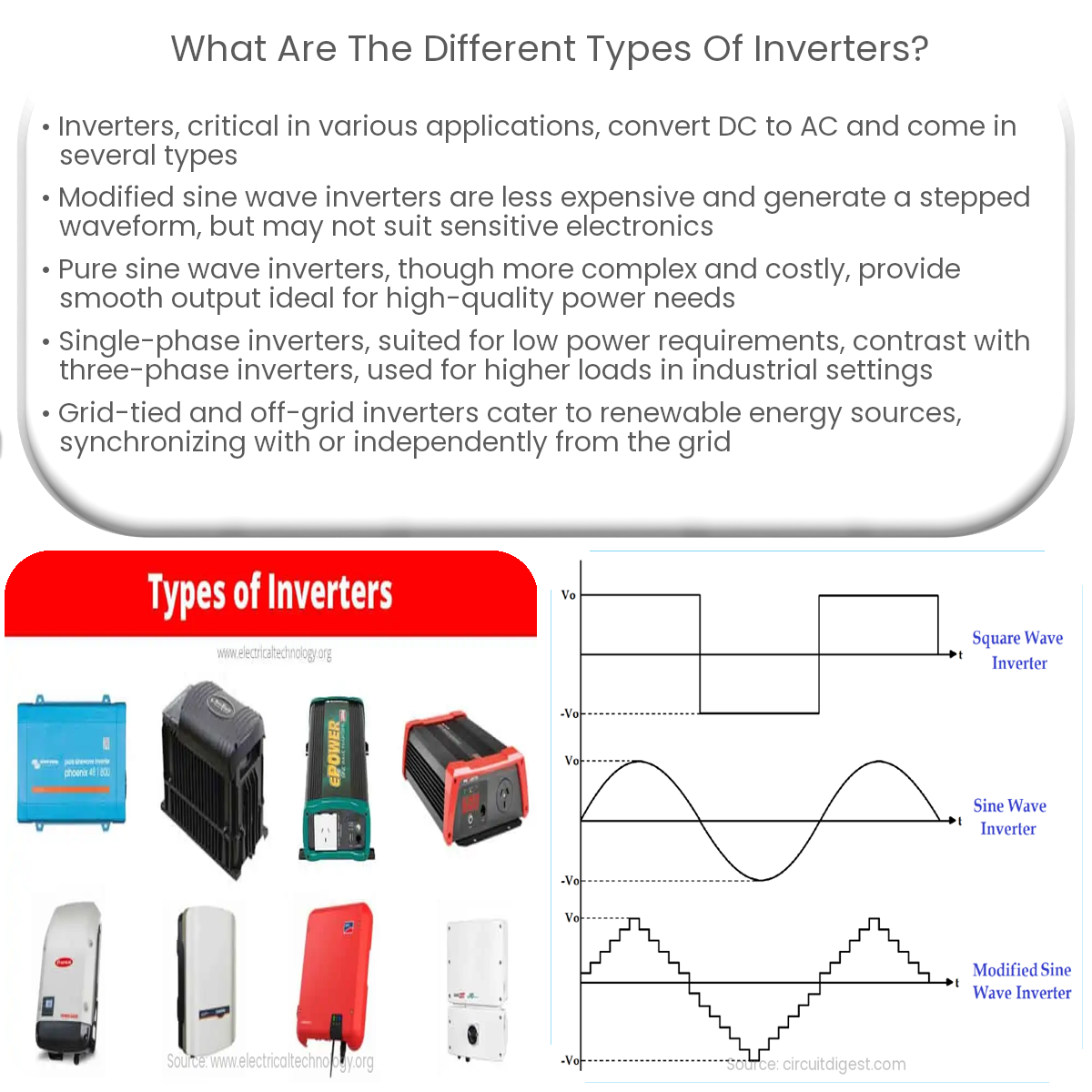Different types of inverters include modified sine wave, pure sine wave, single-phase, three-phase, grid-tied, and off-grid inverters for various applications.
Introduction to Inverter Types
Inverters are essential components in various applications, such as solar power systems, UPS, and electric vehicles. They convert direct current (DC) to alternating current (AC). This article will discuss the different types of inverters and their applications.
Modified Sine Wave Inverters
Modified sine wave inverters generate an AC waveform that approximates a sine wave. The output waveform consists of a series of steps, creating a waveform that is not as smooth as a pure sine wave. These inverters are less expensive and more straightforward to design, making them a popular choice for many applications. However, they may not be suitable for sensitive electronic equipment due to their less smooth waveform.
Pure Sine Wave Inverters
Pure sine wave inverters generate an AC output waveform that closely resembles a perfect sine wave. This type of inverter provides a smooth and continuous output, making it ideal for sensitive electronic equipment that requires high-quality power. Pure sine wave inverters are more complex and expensive compared to modified sine wave inverters but are preferred for critical applications.
Single-phase Inverters
Single-phase inverters convert DC power to AC power with a single-phase output. They are commonly used in residential and small-scale applications, where the power requirements are relatively low. Single-phase inverters are simpler and more affordable compared to three-phase inverters, but their applications are limited by their lower power output capabilities.
Three-phase Inverters
Three-phase inverters convert DC power to three-phase AC power. They are used in industrial and commercial applications, where higher power levels are required. Three-phase inverters can handle higher loads and offer better efficiency than single-phase inverters. However, they are more complex and expensive.
Grid-tied Inverters
Grid-tied inverters are designed to convert DC power generated by renewable energy sources, such as solar panels or wind turbines, into AC power that can be fed into the electrical grid. These inverters synchronize their output with the grid’s frequency and voltage, ensuring compatibility with the grid. They are widely used in solar power systems for homes and businesses.
Off-grid Inverters
Off-grid inverters are used in standalone power systems that are not connected to the electrical grid. They convert DC power from a battery or renewable energy source into AC power for use by appliances and devices. Off-grid inverters are commonly used in remote locations, such as cabins, boats, and recreational vehicles.
Conclusion
There are various types of inverters available, each catering to different requirements and applications. The choice of inverter depends on factors such as power requirements, sensitivity of the connected equipment, and whether the system is connected to the grid. Understanding the different types of inverters can help you choose the right inverter for your specific needs.


